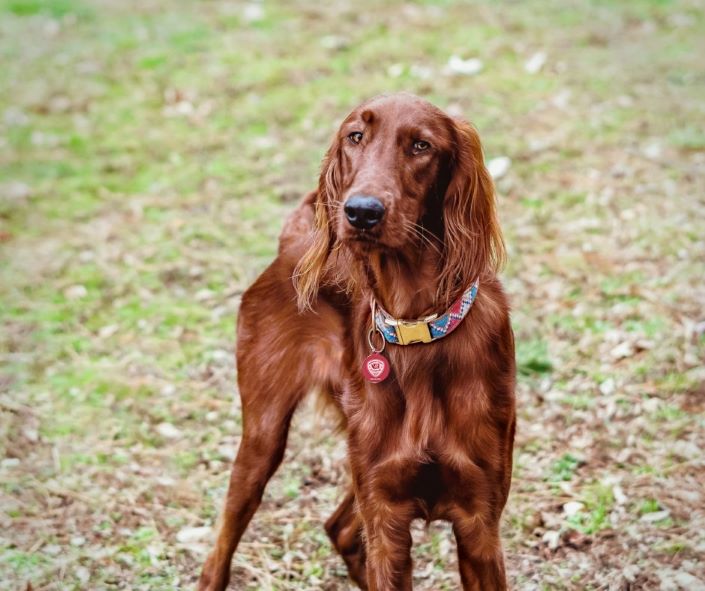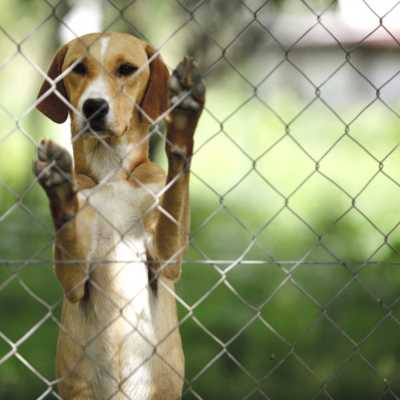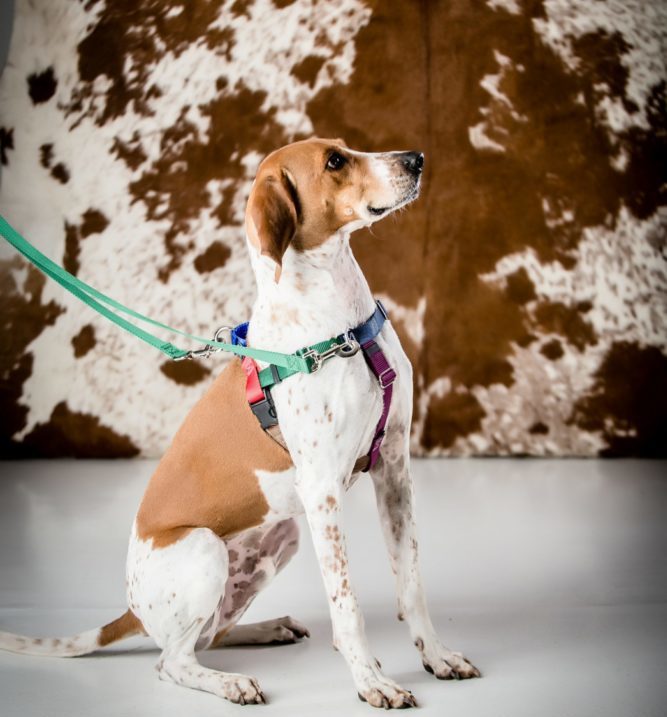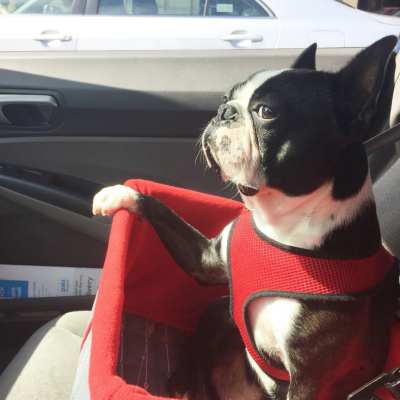 By Bryn Souza
By Bryn Souza
PetHub founded National Lost Pet Prevention Month many years ago and we strive to inform pet owners about why a pet gets lost and how to prevent a missing pet from happening in the first place.
We partnered with the National Animal Care & Control Association to survey pet parents and folks working as Animal Control Officers and in other roles in animal welfare. The primary goal in creating, sharing, and collecting results from our survey was to understand events related to lost dogs and cats. We also wanted to know how pet parents’ experiences and views may differ from those working in the animal care and control field.
We want to “bridge the gap,” between pet parents and animal welfare through the data we’ve collected. More importantly, we want to reduce the cases of lost animals as much as possible by answering: "Why does a pet get lost?"

Survey results showed a gap between what dog owners view to be reasons why their pet has and may go missing compared to folks working in animal welfare like staff at shelters.
Below, we highlight the top three reasons for a lost pet and ways to address them to prevent a lost dog or cat from happening in the first place. We want pet parents to protect their pets and avoid a lost dog or cat and trips to the animal shelter, frantic social media posts, and visits to an animal hospital as much as possible.

Pet Ran Out the Front Door
It seems so simple, but a pet sneaking its way through the front door is one of the most common reasons for missing dogs or cats, based on survey results from pet owners.

Common Door Dashing Situations:
-
The door is open a crack to speak with someone who’s knocked
-
Propping the door to bring groceries into the house
-
When a group of guests enter the home and forget to check on the dog's whereabouts as the door stays open
-
Times when a pet has figured out how to use its nose or paws to twist a handle and let itself out
-
A large dog's hunting instinct kicks in when it sees a squirrel and the door isn't fully latched
-
Loud noises spook a dog and the screen door isn't enough to keep them contained
No matter the reason a pet takes advantage of an open front door, this shows why reducing when a pet and an open door are in the same space at the same time is key.
How to Prevent a Front Door Escape
We’ve pulled together a helpful article ALL about Houdini proofing your home to prevent your best friend from an escape, so we won’t rehash the same stuff you can read there, but here are some key points and prevention tools you can take to avoid having a missing dog or cat.

Build Routines to Ensure Everyone is Safe
If someone knocks or comes to your front door, secure your animal before you greet the person. For some folks, that may be plopping the cat in a room where you can shut the door, like a bedroom, for others it may be putting your dog in a crate. Either way, taking a couple of seconds needed to put your dog or cat in a secure space before opening the door, even if it’s “just a crack” can help reduce the risk of lost pets.
Inform Guests of Your Escape Artist's M.O.
When guests are coming, let them know in advance of your pet and make sure everyone is aware that their location needs to be something folks think about. That said, as a pet owner, you must keep tabs on where your animals are, not your guests.

Try to use the steps listed above for placing your pet in a secure spot before guests arrive. Or, in a pinch, you can even attach your pet’s leash to your belt loop so they are attached to you to prevent your dog from running (be careful if your large dog is strong enough to pull you, though).
Never Let Your Pet Go Naked
Even if your pet has a microchip that is up to date, it's not enough to ensure they get home quickly if they run away. Making sure your dog or cat has a collar on with an up-to-date license tag and/or identification at all times can help with finding a lost dog if he slips out of the front door so he can return home ASAP.
Dog Escaped From the Backyard
Backyards can be an oasis for our dogs to play, run and relax! It may be tempting to open the back slider to let a dog out, leaving it to romp in the backyard without being watched.
Most Common Backyard Escape Situations:
- You or your family, visitors, or a repair or utility worker leaves the fence gate open or does not properly latch upon entry or exit
- The fence, gate, or gate latch is in ill repair and the pet took advantage
- Items placed next to the fence allowed for easy climbing
- Fencing is too easy to climb or jump over or dig under
- The weather has broken the fence
While we would like to believe the yard is secure, many dogs can take advantage of any chance to sneak through a gap in a fence or to hop over a fenced yard, leading to a lost dog.
Got tiny humans? What are the odds your child (or spouse) forgot to fully latch a gate when they were coming and going? And don't even get me started about folks like utility workers not properly securing things after they have accessed your yard. There are a TON of reasons why pets run from a yard ranging from wild animals triggering hunting instincts to fear of a loud noise and all other options in between.
How to Prevent a Dog from Bustin' Out of the Yard
Make Your Dog's Outdoor Space Secure
We’ve pulled together an article about Houdini proofing a yard for you to check out so you can prevent having missing dogs and cats to worry about.

Everything from the type of fencing and gate, enhancements to curb jumping, digging, and climbing to enrichment tools to keep your dog happy and occupied outside is covered.
Get on Their Level
We know that speed is of the essence when reuniting a lost pet with its owner, meaning 30 minutes to an hour of it having a head start could lead to lots of busy roads and distance spanned. All the more of a reason to get on your pet’s eye level and address any possible ways it can escape.
We have a Houdini Hound checklist to guide you through the search. At least once every three months, take an hour to comb the perimeter of your pet's outside space to look for possible escape access points where your dog might run away.
Frequent Check-ins
A dog may take advantage of an opportunity to escape and have a head start on its stroll beyond your backyard if you’re prone to letting a dog out and not checking on them for long windows of time.

That's why we recommend frequent and regular "visual confirmation" of your pet when they are out in the yard. They may be just innocently hanging out, but they may also be digging a tunnel for escape. So check in your pet at least once every 30 minutes when they're outside. If you're focusing on a project in the house or keeping tabs on children, consider setting a timer on your phone to remind you to look outside and check on your pup.
Pet Wandered Off the Property
While this seems like the same thing as what’s listed above, there are times when a pet may not be in an enclosed backyard (like if you’re gardening in the front yard and are relying on your dog to stay near you when your back is turned).
Some reasons why a pet might "wander off":
- Taking a pet on a walk on their property and dropping the leash by accident
- A yard isn’t fenced and a pet owner is depending on an electronic fence
- On vacation and dog is not in its normal home territory
- Hiking or walking off leash and a smell or squirrel lured your doggo away from you

These possible events show the importance of an up-to-date ID tag listing a pet owner's contact info along with current information on the pet’s microchip. While we would LOVE all possible scenarios for a lost pet to be addressed before a dog becomes a lost dog, that isn’t always possible.
We’ve got some key resources for you in the event your pet goes missing to reference below. The goal is to get your pet back as quickly and safely as possible, so be sure you’ve got the first couple of steps covered like having up-to-date ID tags and the pet's microchip information in place.
We know pet parents try their hardest at being proactive in keeping their pets safe, and we hope these tips help prevent your dog or cat from becoming a missing dog or cat!
Other Top Reasons a Pet May Go Missing
Pet owners listed some more reasons why a pet got lost in our survey results that are important to be aware of and work on addressing, too.
- A dropped/slipped leash
- Jumped out of a window
- Recall failure (didn't come when called)
- Lost with a pet sitter
- Car accident
Key Lost Pet Prevention Methods
Leash Management
A dropped or slipped leash can happen because a pet has pulled on the leash or because the pet owner wasn't paying attention as closely as they should be. Some leashes can wrap around a pet parent's waist as an additional security measure. We also recommend making sure you are focusing on your dog when walking and not on your phone.
Some doggos are challenging during walkies. For these pups, the leash you choose can make all the difference in the world. Check out this Pet Lover Geek pocast about the best leashes, collars and harnesses to handle your pup, including our favorite leash & harness duo, 2 Hounds Freedom No Pull.
Consistent Training
Does your dog know the 7 critical commands that will keep them safe? Recall failure as a reason for a missing dog can be related to a dropped leash. Taking the time to train recall regularly can help prevent this from resulting in a lost dog. If you are looking for a great tool to help with training, love the GoodPup app.
What to Do When They Get Loose
Most important, though, is if your pup does run away, stay calm and don't chase him. Instead, calmly use the recall word that you and your family have practiced together. You can also try to get your dog to chase you by using a favorite toy or treat and running playfully in the other direction. If they like car rides, open your car door and see if they will jump in. Check out this su-paw helpful post about other ways to coax them back to safety.
Travel Safety
Image by Bryn Souza
Keeping a pet safe and secure in vehicles can help prevent a lost pet because of a car accident. There are crash-tested boosters that can be placed in a back seat and secured with a seatbelt for small dogs and there are reinforced crates that can safely hold large dogs. PetHub has several great resources to help to prevent lost dogs while on the go, so check them out before you travel.
Lost Pet Prevention While You're Away
Lastly, knowing your pet sitter's credentials is incredibly important to prevent a lost pet. We know not all pet or house sitters are created equal, it's important that you properly vet them and understand their qualifications.
Using a reliable resource like Trusted Housesitters can help ensure the person individual caring for your pet will treat it as well as its owners. Here are more tips on how to prepare your pet's care while you are on vacay.
Additional Helpful Resources
- How to Make an Emergency Kit for Pets - Infographic
- Common Scenarios of Lost Cats - Article
- How to Houdini-Proof Your House
- How to Keep a Dog From Escaping the Yard
- Why Your Pet Needs a Digital ID Tag
We hope that these resources and tips can help keep your pet safe and sound, no matter the circumstance. Before you know it, you’ll have a secure yard and be correctly educated in lost pet prevention methods! Let us know how it works out for you - we love hearing success stories of reuniting missing pets with their owners!
Published on 7/1/2023




